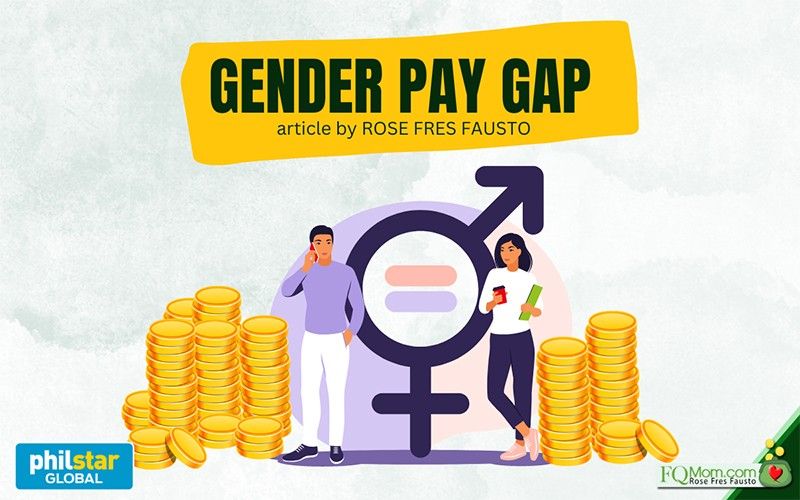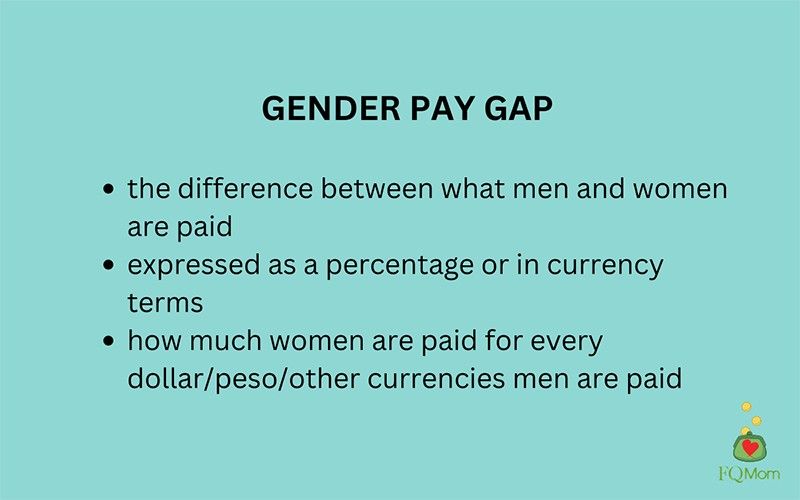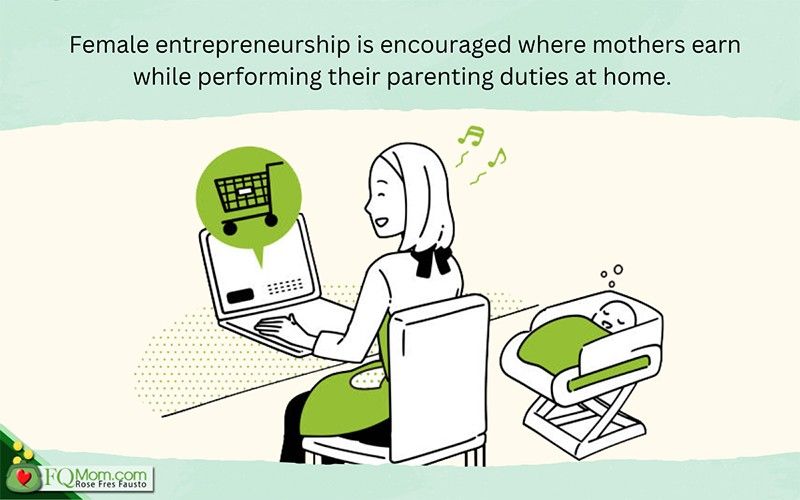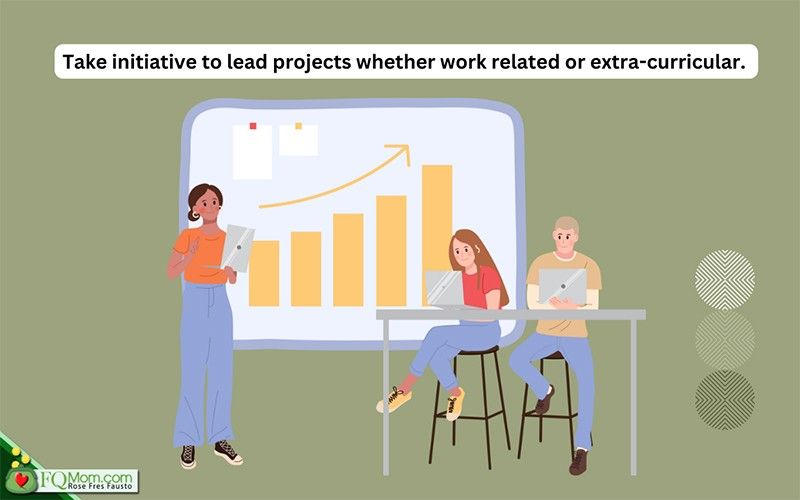The gender pay gap and how we can overcome it


The gender pay gap is the difference between what men and women are paid. It is computed as the median annual pay of all women who work full-time and year-round, compared to the pay their counterpart male workers receive. Other estimates are based on hourly rates. It is commonly calculated by dividing women’s median wages by men’s, and this ratio is expressed as a percent or in currency terms. It tells us how much women are paid for each dollar, peso or other currencies, compared to what their male counterparts are paid.

In the US, where 2022 data is available, the gender pay gap is 18%. That means that for every dollar men are paid, women are only paid 82 cents based on Pew Research Center. Note that in 2002, it was 80 cents to a dollar, showing that it took two decades to improve the inequality by a measly two cents! With this rate of improvement, it will take us 180 more years to close the gap!
In our country, a study by Philippine Institute for Development Studies (PIDS) in 2022 shows that women earn 18.4% less than men in digital jobs, indicating a similar disparity to that of the US data.
In the Philippine agricultural sector using daily rates in 2018, here’s the ratio:
Earnings Ratio = Women’s Daily Rate (P285.51) / Men’s Daily Rate (P310.16)
= 92%
For every peso the Filipino agricultural worker earns, the Filipina counterpart earns 92 centavos.
If we look at global data, we will be happy to note that we are not “kulelat” (at the bottom of the list) in gender parity. Based on the Global Gender Report 2022 of the World Economic Forum (WEF), the Philippines ranks number 19 out of 146 countries in the Global Gender Gap Index. This index is not only about the pay gap but also takes into account other factors such as economic participation and opportunity, educational attainment, health and survival, and political empowerment.

To the big fans of Koreanovelas who may sometimes fantasize of being in the shoes of the porcelain-skinned Korean female lead characters being swept off their feet by their equally BB-creamed flawless skinned leading men, think again. Data on gender parity among OECD (Organization for Economic Cooperation and Development) nations has ranked Korea at the bottom of the list in gender wage gap for over two decades now. Its gender pay gap is 31.1% - i.e. Women are paid only 0.689 for every Korean won paid to their male counterparts.
Side story: Back in the 1990s as an investment banker, I was next in line to be sent abroad for international trip/training, but here’s what happened. Our president talked to me to explain, “Rose, I cannot send you yet because the next country is South Korea, and right now, they still don’t treat their female co-workers there as equals. I will just send you on the next one, to another country. I hope that’s okay.”
Up until now, data show that our Korean sisters, despite their economic advancement, still have a long way to go to catch up in terms of gender parity with us here in the land of Gabriela Silang, Melchora Aquino (also known as Tandang Sora), Prinsesa Urduja. And of course, let’s not forget the housewife to toppled the longest running dictator Cory Aquino, the tiny and brave journalist Maria Ressa, who took on former President Duterte and social media giant Facebook to help preserve democracy, consequently, earning the very first Nobel Peace Prize ever won by a Filipino. And there are many more. Isn’t it great to be in the company of these women?
Why is there a pay gap?
The gender pay gap is a result of various factors and most are systemic. To understand this issue, it is important to look at our labor history. The woman was in charge of the home – both its upkeep and child-rearing - and there is no income reflected in the work performed at home. Employers generally prefer to hire male workers as they will not take maternity leaves and are less likely to take other parenting-related leaves. Because of the traditional family set-up where the husband is the breadwinner and the wife is the homemaker, society in general, is more willing to give higher salaries to male employees. Moreover, on the employees’ part, females are also less likely to negotiate their salaries.
Can we close the gap?
There have been growing clamors and intensified discussions about closing the gap because everyone was alarmed with the data released by the World Economic Forum (WEF) that it might take around two centuries to close the gap.
Melinda Gates, co-chairman of the Bill & Melinda Gates Foundation, has committed one billion US dollars to promote gender equality.
Society is making deliberate efforts to narrow and eventually close the gap. We see the following steps being taken.
1. In some countries like Iceland the government requires companies to make public their employment records, including the gender pay gap. No wonder Iceland ranks number one in the gender parity index.
2. Paternity leaves are enforced. During my Behavioral Economics course at Harvard Business School where we discussed a case on gender pay gap, I learned some interesting stories from my female Scandinavian classmates. According to them, people in their countries (Norway, Iceland, Sweden, etc.) look down on fathers who don’t take their full paternity leaves. Hooray to involved fathers! ![]()
3. Female entrepreneurship is encouraged where mothers earn while performing their parenting duties at home. I’m happy to see this prevalent in the Philippine society where many mothers are growing their businesses while working from home, giving birth to the term mompreneurs.

4. Mentoring programs implemented in offices where women are taught to negotiate salary, reconcile parenting and career obligations, and other matters.
5. Female representation in board of directors is required in listed companies.
While we wait for the societies worldwide to address the systemic causes of the gender pay gap, here are some things that you and I and all women out there can do now to mitigate the adverse effects of this gap.
1. Be more proactive in mapping out your career. Know where you want to be in three to five years and work on the necessary skills to achieve your goals.
2. Network within and outside your organization. Do you know that a lot of men are hired because of network? It’s the old boys club at work. So, women should also have networks not just with fellow women but with all genders.
3. Take initiative to lead projects whether work related or extra-curricular.

4. Keep a record of emails, notes, and other forms of commendation for job well done.
5. Learn to negotiate your salary or professional fee. Don’t be shy.
6. If you’re married, understand your rights about your properties.
7. Learn how to handle your money well and prepare for your retirement.
Chances are, we will not live to see the gender pay gap closed in our lifetime. Moreover, our life expectancy is longer than our male counterparts. Generally, we also work for shorter periods during our employable age due to work interruptions. Put all these three together and we are challenged to save and invest for a larger retirement nest egg from our lower salaries that we earned for a shorter period of time. This makes it compelling for us to have a higher FQ (Financial Quotient) than our male counterparts!
So, let’s do it!
Do you already have a system that automatically sets aside your savings and investments for your old age? Are you protected in case something happens to you? Do you have dependents still counting on you financially?
If you haven’t started your FQ journey yet, please click the link to take the FQ test now. In the end, the antidote for the adverse effects of this gender pay gap is a high FQ!
*******************************
Attributions:
1. Gender Pay Gap US: https://www.pewresearch.org/social-trends/2023/03/01/the-enduring-grip-of-the-gender-pay-gap/
2. Digital Workers Pay: https://www.pids.gov.ph/details/news/in-the-news/gender-bias-women-digital-workers-face-lower-wages
3. Philippine daily wage rate source: https://www.philstar.com/business/2019/10/31/1964915/gender-pay-gap-philippine-farm-sector-persisted-2018-psa
4. https://www.business-humanrights.org/en/latest-news/philippines-govt-reports-no-change-to-gender-pay-gap-in-the-agriculture-sector-in-3-years/
5. Global Gender Gap Report 2022: https://www.weforum.org/reports/global-gender-gap-report-2022/



















